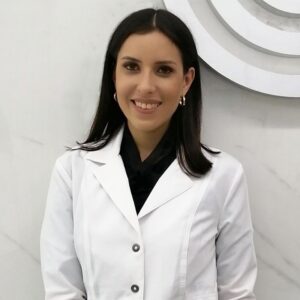What is mitochondrial DNA?
Mitochondrial DNA - what is it and what is its function?
Mitochondrial DNA is the small circular chromosome found inside mitochondria. Mitochondria are double-membrane-bound organelles that can be found in most eukaryotic organisms.

Our bodies are made up of billions of cells so each cell contains a complete copy of a personal genetic book of life. Chromosomes can be thought of as being made up of strings of genes DNA that goes for proteins with no coding DNA between them so the chromosomes include the genes are made up of a chemical substance called DNA or deoxyribonucleic acid so, chromosomes are found in nucleus of all body cells except for red blood cells. In this case, red blood cells have no nucleus and therefore do not contain chromosomes but another place in the cells where DNA is found in very small compartments called mitochondria. So the DNA mitochondria is much smaller and mostly no codeine DNA so mitochondria are found randomly scattered outside the nucleus but still within the cell the DNA within the mitochondria is arranged as one circle. The role of mitochondria each in each of the cells of the body is mainly to make energy – it’s like our battery for the cell and the body but it is important to remember that while each cell will always have only one nucleus, the number of mitochondria can vary from one cell to another so, the cells in the body, especially in organs such as the brain, heart, muscle, kidneys kind of fusion normally unless they are receiving a constant supply of energy, the cells generally is a chemical called ATP adenosine triphosphate. The ATP is broken down, it releases the energy needed for the body to properly grow and develop. The number of chemical reactions that happen in another sequence in the mitochondria control the process of making this energy, this chemical called ADP so, these reactions are under the control of spatula proteins called enzymes so the genes found within the mitochondria contain DNA coding for making some of these important enzymes. The chemical process which happen in the mitochondria to make energy are part of mitochondrial respiratory chance so this change is made up of five parts called complexes one, two, three, four, five and these composes they are made up of a number of proteins so the extraction of these proteins to be produced by the cells are contained in a number of genes. There are many different genes needed to make the part of the mitochondrial respiratory change. Some of these genes are found in the DNA of the mitochondria and others are found in the DNA in the nucleus. Nucleus is related to the chromosomes, so they use it to provide distractions for proteins which are the building blocks of the cells that made up our body. Although we all have the variation in our genes sometimes this can affect how our bodies grow and develop so DNA variations that have no impact on our health are called polymorphisms or variants so they tend to be more common in people. These changes may mean that the gene does not work properly or works in a different way that is harmful. A variation in a gene that causes a health development condition is called a pathogenic variation of mutation but in the case of a mitochondrial gene mutation can sometimes results in mCells that involves the respiratory chains not produced properly so this list you you can remember that mitochondria is linked to energy batteries and this leads to not not enough ADP being made so this could be very very harmful to the body.

Mitochondrial are like the batteries in our cells. They’re like our double-A batteries in each cell that power the cells. They’re present in the sperm tail; they generate the swimming motion of the tail without the batteries. So there are absolutely vital mitochondria. Most genes that make these batteries are actually on the linear human chromosomes, but they also have their own little circular chromosome as well. If they’re mutated, then that can cause male infertility and can affect motility in the sperm. These mitochondrial mutations can be inherited from only the woman because when a sperm fertilizes an egg, it’s only the head of the sperm that goes into the organ; it discards the tail. So there’s no mitochondrial, and our mitochondria from the male that enters the organ. So you will only inherit this mitochondrial DNA from your mother.
Related questions
What is the PGT-A strategy for patients with implantation failure?

What are gene mutations and how can they affect my fertility?




